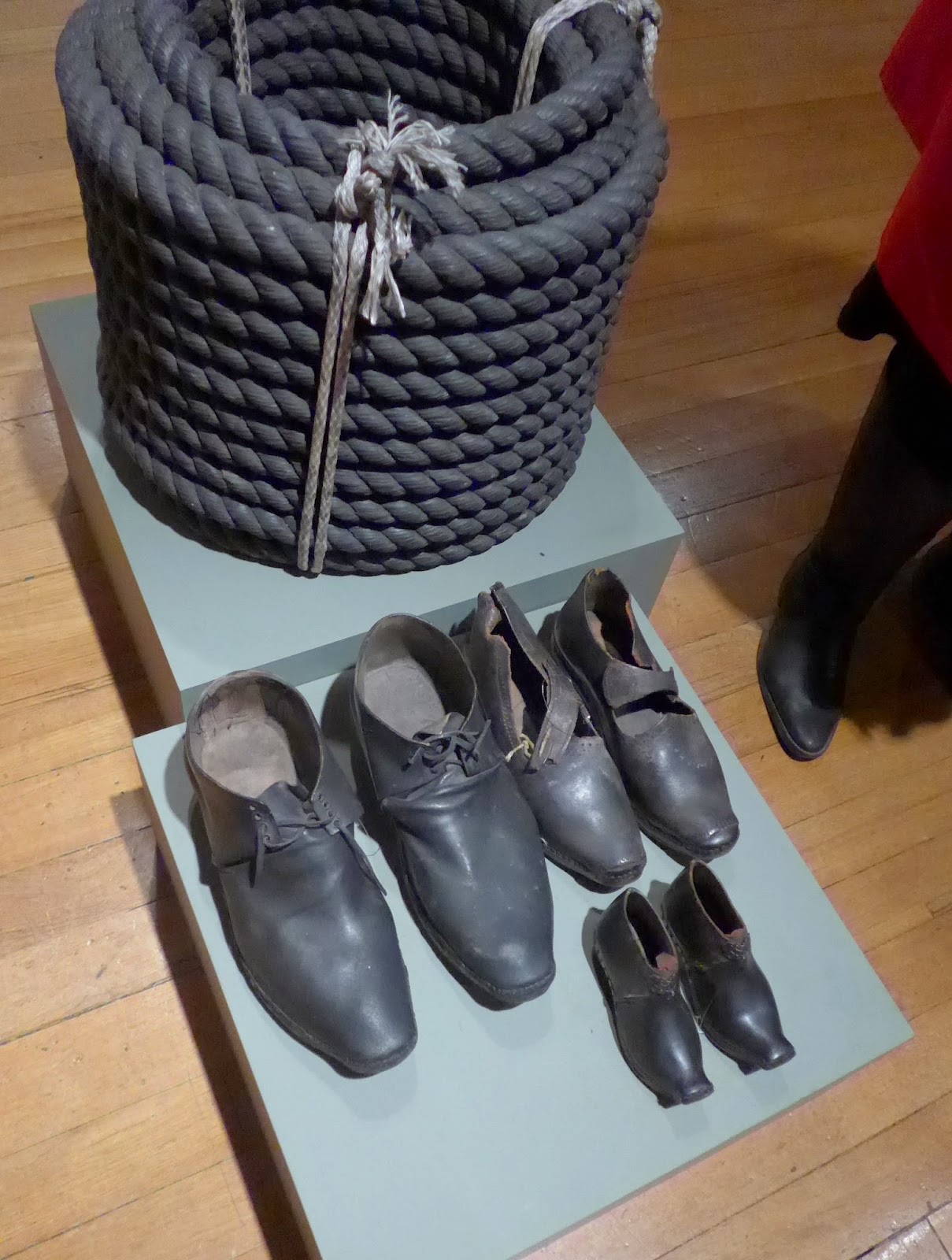At the outbreak of the Second World War in 1939, with the disruption of everyday life, fear of an imminent gas attack and invasion, and resources thrown into the war effort, people wondered if fashion would just 'go away'. But quite the opposite happened, clothing and fashion adapted to the time, retailers saw new opportunities, people made do and mended, the British government got involved and mass manufacture became more efficient, producing price regulated, decent quality clothes for all.
The exhibition, 'Fashion on the Ration' tells this story at the Imperial War Museum, London.
The exhibition, 'Fashion on the Ration' tells this story at the Imperial War Museum, London.
The fashion landscape changed, more uniforms were seen on the streets, both the armed forces and women's auxiliary services. Some uniforms were more desirable than others which swayed people's decisions about signing up.
The air force uniform was considered very smart, the men named the 'Brylcreem boys'.
Apart from school, I've never worn a uniform, except perhaps for this one, for a very short time, in the Girl-Guides.
Like these Girl-Guides taking part in a fund raising parade in 1941.
If you hadn't signed up and been issued a uniform, there was a kind of home front uniform.
The housecoat, worn to protect your hard-to-replace everyday clothes. Funny how I've grown up thinking that a housecoat was kind of dressing gown.
Housecoats increased in popularity. These housecoats look to good to do the housework in. I wouldn't be drying my hands on them like I do with my grubby kitchen apron.
And aircraft factory overalls in Manchester weren't that bad either.

Retailers saw opportunities and jumped on the bandwagon, creating clothes and accessories for war conditions.
Like the 'Siren Suit'. Perfect for pulling on over your nightie for that middle of the night dash to the air raid shelter. This even has a drop down flap at the rear for convenience. Mind you how convenient was the lavatory back at the house when you were ensconced in a shelter down the garden?
And luminous accessories for the Blackout. Buttons and flowers.
Plus checkout these handbags with gas mask compartments.
Or you could just take the government's advice and wear something white, cheaper that way. This wasn't just a gimmick, one in five people were injured in the blackout.

In 1941 rationing was introduced. Food had been rationed for over a year. The government wanted to safeguard raw material and free up labour and factory space for the war effort. The rationing of clothes was successful in ensuing decent quality, durable, price regulated supplies for all, resulting in clothes being distributed more fairly.
You were issued with 66 coupons and a dress was 11. So the public were encouraged to 'Make Do and Mend'. This was the bit of the exhibition I was really looking forward to.
.JPG)
Perhaps inspired by 'Woman'.
This dressing gown was made from an RAF silk 'escape map'. Surplus maps were sold off to the public in 1945.

Then you could also knit for yourself.
Fairisle was a 'useful for using up scraps of different coloured wool'. So they say, I reckon fairisle is more complicated and planned than that. I could well be wrong.
'Make Do and Mend' has been embraced recently, capturing some kind of romantic nostalgic attitude to crafts and recycling, but this official rhetoric was not particulalrly liked at the time.
This wedding dress was made from pre-war silk intended for petticoats. It was first worn by Evelyn Higginson in 1943, who later lent it to fourteen other women, including her sister Linda in 1946.
I came to Fashion on the Ration at the Imperial War Museum with a little idea how the Second World War had impacted fashion in the forties, influenced by necessity, the need to protect what clothes they had, newly available jobs in the factories, lack of raw materials and the like. The most surprising thing I found out was that the government, in regulating the use of rubber, one of the rarest of commodities in war time, prioritised the use of elastic for women. 'Women's knickers were one of few garments where the use of elastic was allowed'.
Don't get to excited though, here's a pair of 'Utility peach rayon knickers'.
Fashion on the Ration is on at the Imperial War Museum, London until 31st August 2015.
Details on their website here.
Before they are accused of a one-sided look at fashion and clothing in the Second World War. There were men's garments and accessories, I just don't seem to have taken any photos of them.















.JPG)



.JPG)











































